PRINCE2 stands for Projects IN Controlled Environments. It is a project management methodology that ensures projects are delivered on time and within budget through a structured framework. The UK government’s creation PRINCE2 has gained wide acceptance due to its effectiveness. In this article, you’ll learn about its core principles, certification process, and real-world benefits.
Key Takeaways
- PRINCE2 provides a structured framework for project management, emphasizing continuous learning and adaptability across diverse industries.
- Achieving PRINCE2 certification enhances career prospects, offering higher salaries and global job opportunities in project management roles.
- The PRINCE2 methodology consists of seven principles, themes, and processes, which together guide effective decision-making and project delivery, aiming for a successful project.
Understanding PRINCE2

The acronym PRINCE2 stands for Projects in Controlled Environments and is the result of an initiative by the UK government to create a standardized method for managing projects, addressing shortcomings found in earlier project management approaches. It provides a meticulous approach with defined roles, responsibilities, and stages that promotes the successful completion of projects.
At its core, PRINCE2 incorporates continuous learning from every stage of a project as one of its key principles. This ensures ongoing enhancement in how future projects are managed and executed. For project managers, mastering these principles becomes crucial since it offers them streamlined control over various critical aspects such as scope, timelines, budgeting and quality.
Communicating the advantages offered by PRINCE2 tailored to different stakeholder groups can foster backing for implementing this framework. The benefits extend not just to individual projects, but also enrich overall practices within project management, offering widespread value across diverse sectors eager to improve their execution strategies.
The PRINCE2 Framework

Seven fundamental principles, which serve as a constant foundation throughout a project’s lifecycle and persistently emphasize justifying business value, form the basis of the PRINCE2 project management framework. These principles are designed to maintain each project’s relevance and coherence with overarching company objectives. The framework aims to ensure a successful project by maintaining relevance and coherence with company objectives.
At its heart, PRINCE2 comprises seven pivotal themes that cover various facets of managing projects efficiently while facilitating informed decisions. Among these is the establishment of a solid business case to underscore ongoing viability. This flexibility within the themes provides room for project managers to customize their approach according to specific requirements and challenges faced in any given venture.
Seven discrete processes lay out a clear structure covering every stage from inception through completion within PRINCE2 methodology—like ‘Managing Product Delivery’ which verifies that outcomes meet established standards of quality. The concept called ‘managing by exception’ empowers managers overseeing projects to concentrate on substantial discrepancies when compared against original plans, bypassing inconsequential specifics.
Key Components of PRINCE2
PRINCE2 is a structured project management method that consists of several key components. These components work together to provide a comprehensive framework for managing successful projects. By understanding and applying these elements, project managers can ensure that their projects are well-organized, efficient, and aligned with business objectives.
Seven Principles
The seven principles of PRINCE2 form the foundation of the method, guiding project managers in their decision-making and ensuring that projects remain viable and focused. These principles are:
- Continued Business Justification: Every project must have a clear business case that justifies its existence and ensures it remains viable throughout its lifecycle. This principle ensures that resources are used effectively and that the project delivers value to the organization.
- Learn from Experience: PRINCE2 emphasizes the importance of learning from past projects. By documenting lessons learned and applying them to current and future projects, teams can avoid repeating mistakes and improve their processes.
- Defined Roles and Responsibilities: Clear roles and responsibilities are crucial for project success. PRINCE2 ensures that every team member understands their role and what is expected of them, promoting accountability and efficient collaboration.
- Manage by Stages: Dividing the project into manageable stages allows for better control and planning. Each stage has specific objectives and deliverables, making it easier to monitor progress and make adjustments as needed.
- Manage by Exception: This principle empowers team members to manage their work independently, with the project manager intervening only when necessary. This approach reduces micromanagement and allows the project manager to focus on significant issues.
- Focus on Products: PRINCE2 prioritizes the delivery of specific products rather than just completing tasks. This product-focused approach ensures that the project delivers tangible results that meet the needs of stakeholders.
- Tailor to Suit the Project: PRINCE2 is flexible and can be tailored to suit the specific needs of each project. This adaptability ensures that the method remains relevant and effective, regardless of the project’s size or complexity.
Seven Processes
The seven processes of PRINCE2 provide a structured approach to managing projects from start to finish. Each process plays a vital role in ensuring that the project is well-planned, executed, and controlled. These processes are:
- Starting Up a Project: This initial process involves defining the project’s objectives, scope, and feasibility. It sets the foundation for the project and ensures that it is aligned with business goals.
- Directing a Project: This process involves the project board, which provides overall direction and decision-making authority. The board ensures that the project remains on track and addresses any major issues that arise.
- Initiating a Project: In this process, the project plan is developed, detailing the project’s scope, timeline, budget, and resources. It provides a roadmap for the project’s execution.
- Controlling a Stage: This process involves monitoring and controlling the project’s progress within each stage. It ensures that the project stays on track and that any deviations are addressed promptly.
- Managing Product Delivery: This process focuses on the delivery of the project’s products. It ensures that the products meet quality standards and are delivered on time and within budget.
- Managing a Stage Border: This process involves reviewing the current stage and planning the next one. It ensures a smooth transition between stages and allows for adjustments based on the project’s progress.
- Closing a Project: This final process involves formally closing the project, ensuring that all deliverables are completed, and documenting lessons learned. It provides a clear end to the project and allows for a smooth transition to operations.
Benefits of PRINCE2 Certification

Obtaining a PRINCE2 certification can considerably enhance your career trajectory, as it’s often a prerequisite for roles in project management across various organizations. Many large corporations and governmental organizations value this credential internationally, making it easier to access job opportunities everywhere.
Professionals with PRINCE2 certifications tend to command higher earnings than those without such qualifications. For instance, annual salaries for PRINCE2 Practitioners range from $40,000 to $242,000 based on their experience level and the specific nature of their job role. The case of ILX Group improving project management capabilities at Atradius demonstrates how beneficial PRINCE2 training can be. Atradius is an international company specializing in credit risk insurance.
Earning a PRINCE2 certificate paves the way for positions including Project Manager, Program Manager, and Project Management Analyst. Success stories like that of Natural England — which reached a 100% success rate in its blended learning initiative through the adoption of PRINCE2 methodologies —underline the real-world advantages offered by this form of certification in enhancing one’s skills within their professional capacity.
PRINCE2 Foundation vs. PRINCE2 Practitioner
Individuals seeking to grasp the essentials of PRINCE2 and actively engage with a project management team are the focus of the PRINCE2 Foundation certification. Achieving Practitioner status demonstrates one’s proficiency in customizing and utilizing PRINCE2 methods across different project situations. Both certifications aim to equip professionals with the skills needed to manage a successful project.
For eligibility to sit for the more complex Practitioner exam, candidates must first successfully pass either the 60-question closed-book Foundation exam—which necessitates a minimum score of 55%—or hold an alternative recognized certificate in project management. The open-book Practitioner examination comprises 68 questions and similarly requires at least a 55% mark for passing.
While basic knowledge is assessed through the Foundation test, candidates aiming for Practitioner level need not only a broader comprehension but also practical application skills regarding PRINCE2 practices. Utilizing practice exams is particularly advantageous when preparing for this advanced level since quick reference during this open-book assessment can be crucial.
Preparing for the PRINCE2 Exam
To pass the PRINCE2 exams, comprehensive preparation is essential. It’s advisable to study the PRINCE2 manual meticulously to gain a solid grasp of project management principles and roles. Tackling a wide array of practice questions and consistently achieving high marks on mock exams can serve as good indicators of your preparedness for the test.
Ensure that you establish and verify your technological setup at least an hour before the exam starts on testing day. This proactive approach will likely result in less anxiety during the exam and enhance your probability of performing well.
PRINCE2 Training and Support
PRINCE2 training and support are essential for project managers and team members to effectively apply the methodology in different project environments. AXELOS, the owner of the PRINCE2 method, offers a range of training courses and certifications, including the PRINCE2 Foundation and PRINCE2 Practitioner certifications.
In addition to AXELOS, numerous other training providers offer PRINCE2 training and support. These providers offer various formats, including online courses, classroom courses, and blended learning options, catering to different learning preferences and schedules.
PRINCE2 training covers a wide range of topics, including the seven principles and seven processes of PRINCE2, as well as how to tailor the method to suit specific project needs. This comprehensive training ensures that project managers and team members have the theoretical knowledge and practical skills required to deliver projects successfully in different project environments.
Applying PRINCE2 in Different Project Environments

The versatility of PRINCE2 enables it to be customized for a wide array of project environments and demands, making it suitable for use across multiple sectors. There is an emphasis on modification to ensure the approach aligns more closely with each project’s unique circumstances and setting. Organizations can integrate their specific jargon within the tailored version of PRINCE2.
Despite this flexibility in customizing process details, adherence to the seven fundamental principles of PRINCE2 remains imperative throughout any tailoring initiative. Adaptations are permissible regarding Management products, as they need to mesh well with an organization’s operational framework while being informed by seasoned judgement in project management practices that enhance effective customization according to distinct environmental factors.
For optimal integration into organizational processes, adopting PRINCE2 gradually on certain projects is recommended so teams have time to acclimate and validate its benefits before a full-scale rollout occurs. Effective delivery hinges upon how well each implementation is modified, taking into account both individual needs and structural specifics pertinent to particular projects at hand.
Industries and Companies that Use PRINCE2
PRINCE2 is widely used across various industries and companies around the world, demonstrating its versatility and effectiveness in managing projects. Some of the industries that commonly use PRINCE2 include:
- IT and Technology: In the fast-paced IT and technology sector, PRINCE2 is used to manage complex projects and deliver high-quality products. Companies like IBM and HP rely on PRINCE2 to ensure their projects are well-organized and meet client expectations.
- Finance and Banking: The finance and banking industry uses PRINCE2 to manage projects that must comply with strict regulatory requirements. This method helps ensure that projects are completed on time and within budget while meeting all necessary standards.
- Construction and Engineering: PRINCE2 is used in the construction and engineering industry to manage large-scale projects. Companies like Shell and BP use PRINCE2 to deliver high-quality products and manage risks effectively.
- Healthcare: In the healthcare industry, PRINCE2 is used to manage projects that must meet stringent regulatory requirements. This method helps ensure that projects are completed efficiently and deliver the desired outcomes.
These examples highlight the broad applicability of PRINCE2 in various sectors. By adopting PRINCE2, organizations can improve their project management practices, leading to more successful projects and better business outcomes.
Managing Successful Projects with PRINCE2
The development of Heathrow Airport’s Terminal 5 successfully implemented PRINCE2 methodologies, which included consistent evaluations and well-defined roles for effective risk management and adherence to project deadlines. In a similar vein, the organization of the London 2012 Summer Olympics leveraged PRINCE2 principles to manage risks efficiently while engaging stakeholders through its organized framework.
Environment Canada also uses PRINCE2 to oversee a variety of environmental programs and regulations. The method has proven its broad applicability, with major entities such as Barclays Bank PLC and the National Health Service (NHS) leveraging it to secure successful outcomes in diverse industry projects.
These practical instances serve as case studies that exhibit how PRINCE2 effectively translates into real-world applications across different project types. Such cases punctuate the adaptability and dependability of PRINCE2 when managing projects, reinforcing best practices within global project management landscapes.
PRINCE2 Vs. Other Project Management Certifications
The Project Management Institute grants the PMP certification, which underscores project management principles. On the other hand, AXELOS offers the PRINCE2 credential, which places a higher priority on a methodology that is based on process-based project oversight. Both certifications derive from the PMBOK Guide yet diverge in their exam content to reflect distinct emphases.
Certifications focused on Agile endorse an incremental and evolutionary model for achieving continuous results during the life cycle of project execution. This strategy is in contrast to the sequential progression that both the PMP and PRINCE2 frameworks emphasize. Agile qualifications act as standards to evaluate an individual’s practical application and understanding of agile concepts alongside theoretical knowledge.
Recognizing these distinctions enables professionals to determine which certification aligns best with their specific aspirations within their career path and preferred style of managing projects.
Common Challenges in PRINCE2 Implementation
The necessity for sufficient PRINCE2 training is paramount, given that insufficient training can result in the ineffective use of its methodologies and tools. If employees are accustomed to current processes, their resistance to adopting new changes can obstruct the successful application of PRINCE2.
It’s advisable for individuals who have recently acquired their PRINCE2 certification to progressively accumulate experience before assuming major duties. Confronting these prevalent obstacles is essential in steering a project towards success and enhancing overall project management effectiveness.
Career Opportunities with PRINCE2 Certification
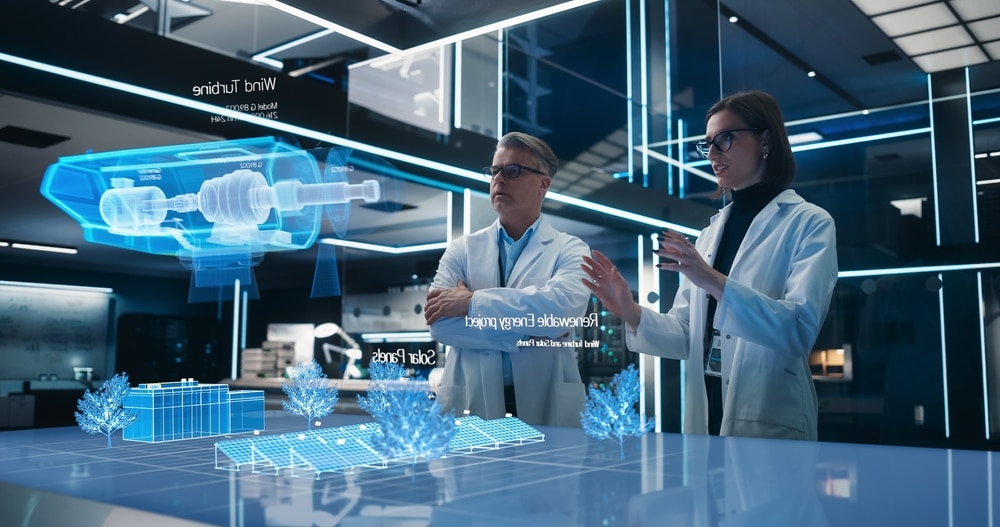
Obtaining a PRINCE2 certification can notably increase your appeal to potential employers, especially for roles involved in project support or administration. Numerous organizations regard this credential as vital when recruiting individuals for project management-related jobs. With over one million certified professionals around the world, PRINCE2 stands as the most extensively adopted method within the realm of project management. PRINCE2 certification equips professionals with the skills needed to manage a successful project.
Companies frequently seek out those who have earned their PRINCE2 credentials because they believe them to be skilled at thriving in difficult situations. Committing to established and proven practices in project management such as those encompassed by PRINCE2 is associated with elevated levels of success within an organization, which is particularly relevant for aspirants seeking to become proficient practitioners of the method.
A staggering 97% of executives believe that professional certifications result in enhanced operational efficiency and greater job satisfaction among employees. This statistic underscores how pivotal a role obtaining a PRINCE2 certificate plays not only in advancing one’s career but also in nurturing personal growth within their profession.
Summary
In essence, obtaining a PRINCE2 certification equips individuals with an extensive set of guidelines for managing successful projects within diverse industries. This qualification can bolster one’s career trajectory and augment their salary prospects by endowing them with a validated approach to proficient project management. Mastery in your project management capabilities through PRINCE2 is achieved through grasping its foundational principles, diligent exam preparation, and implementing the framework across various project environments.
Frequently Asked Questions
What is PRINCE2 certification?
PRINCE2 certification is a globally recognized project management qualification that focuses on process-based management and ensures continuous business justification. It equips professionals with the skills to effectively manage projects within various environments.
What are the differences between PRINCE2 Foundation and Practitioner?
The PRINCE2 Foundation certification emphasizes basic knowledge and understanding of the PRINCE2 methodology, whereas the Practitioner level necessitates a deeper comprehension and the ability to apply this methodology in real-world scenarios.
How can I prepare for the PRINCE2 exams?
It is crucial to diligently review the PRINCE2 manual, engage in practice using exam questions, and ensure your technology is correctly configured for the PRINCE2 exams to prepare effectively. Adopting this method will boost both your preparedness and self-assurance.
Can PRINCE2 be applied to different project environments?
PRINCE2 is versatile and can be customized to suit various project environments, ensuring it meets the unique demands of different industries. Its adaptability increases its applicability in a range of project scenarios.
What are the career benefits of PRINCE2 certification?
Earning a PRINCE2 certification substantially increases your attractiveness as a job candidate, augments your potential to earn higher salaries, and opens doors to elevated career positions like Project manager and Program manager. In the realm of project management, this qualification serves as an important resource.


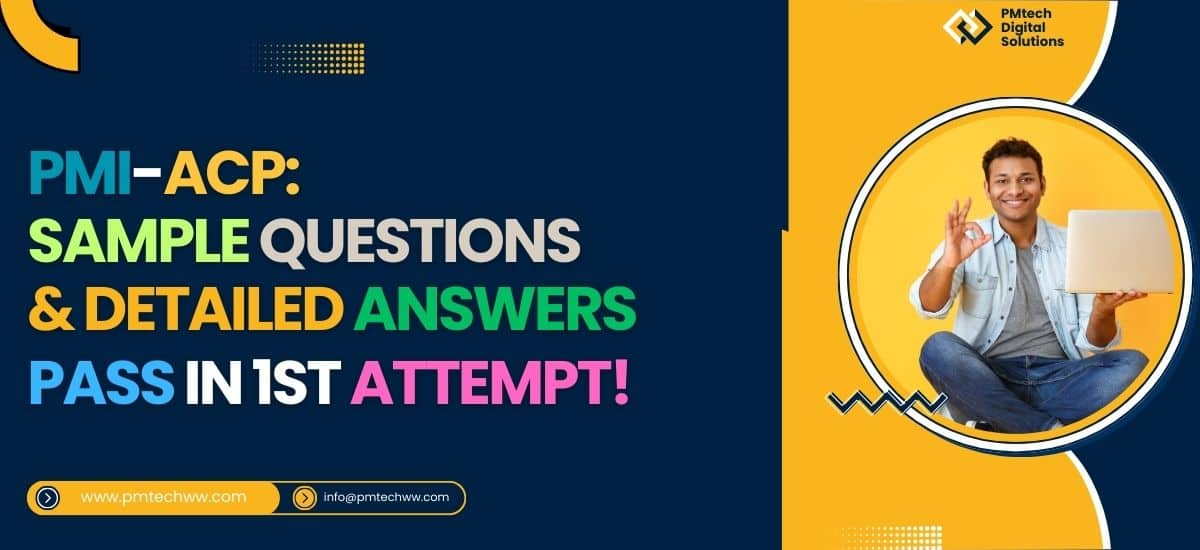



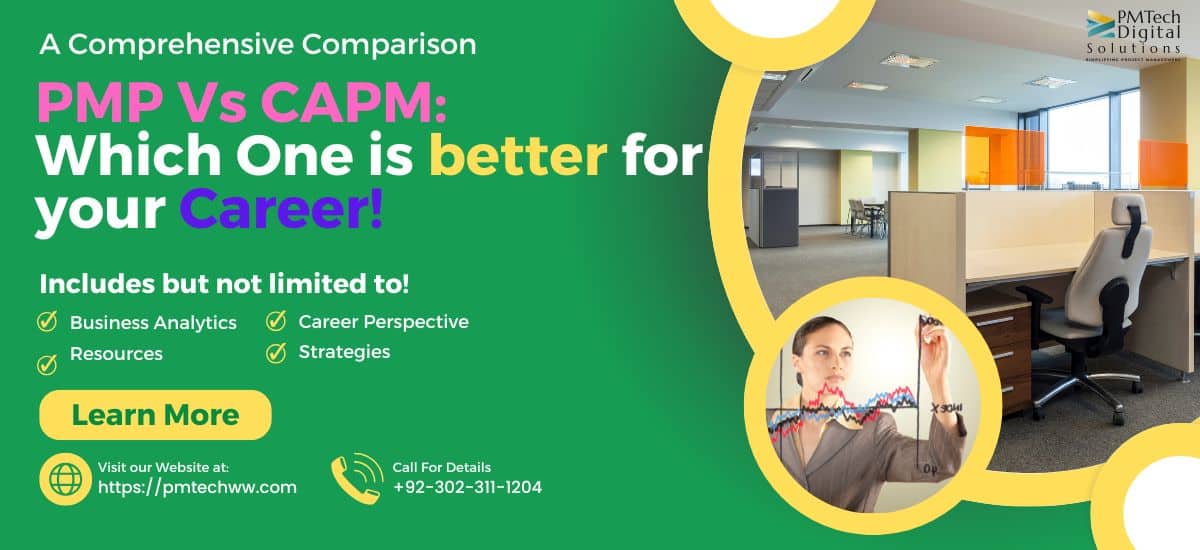

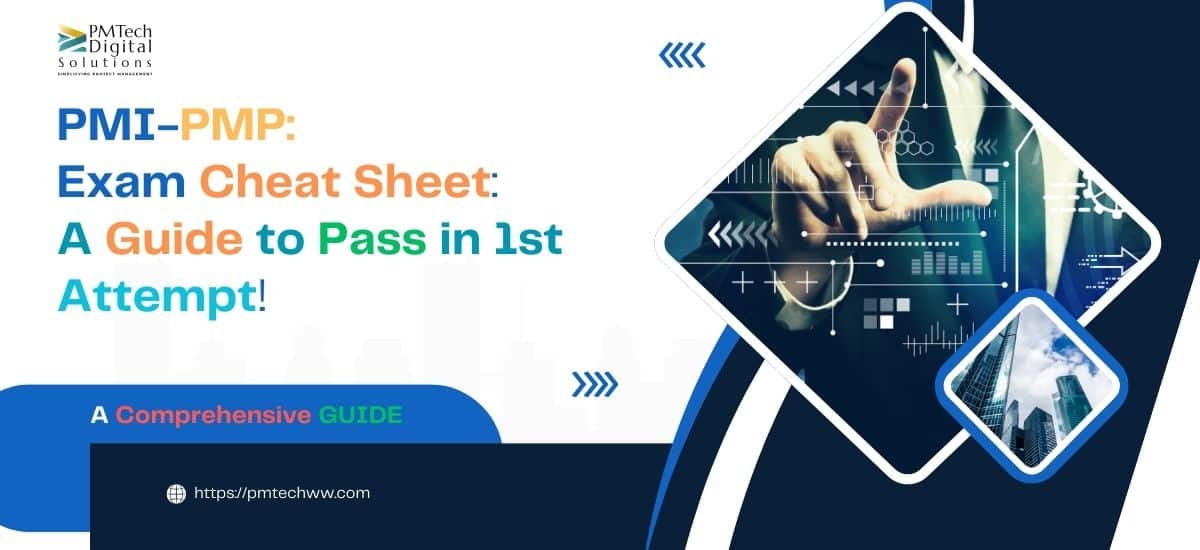

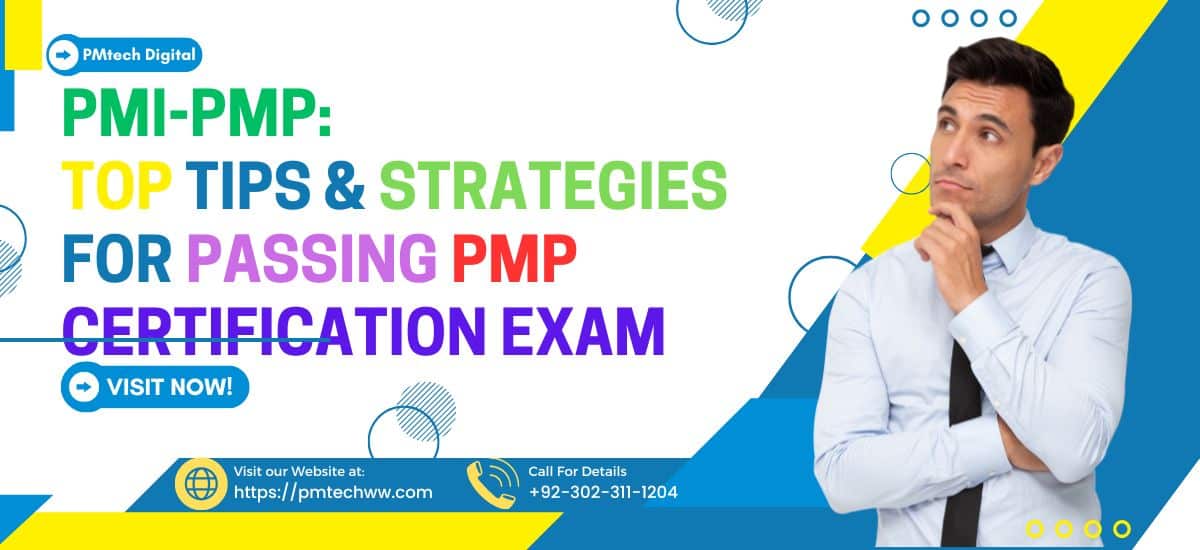
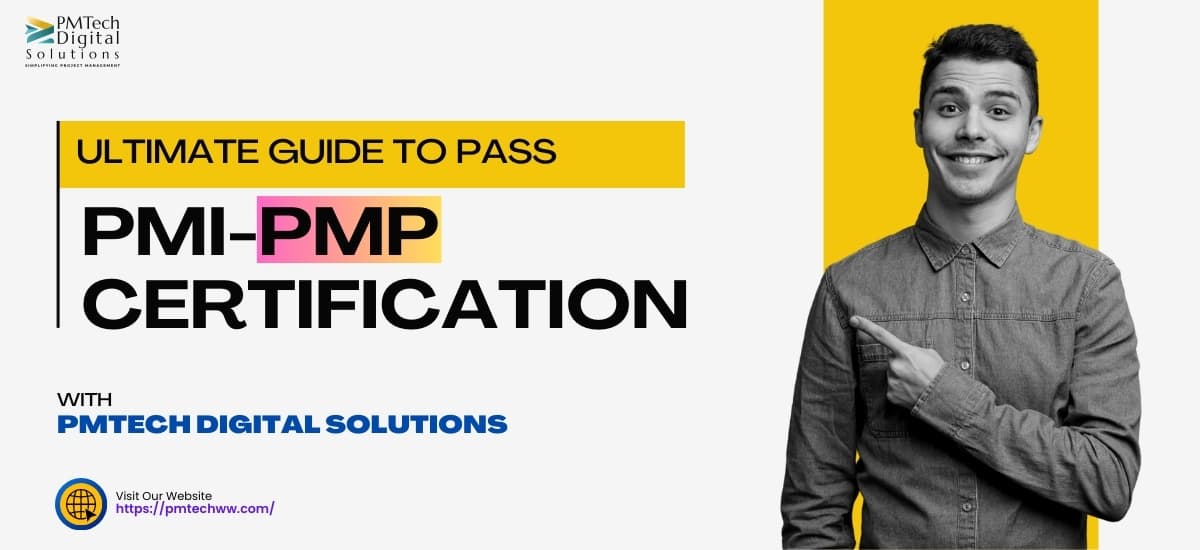
139 Responses
You have brought up a very excellent details, appreciate it for the post.
Thanks for sharing. I read many of your blog posts, cool, your blog is very good.
I was recommended this web site by my cousin. I’m not sure whether this post is written by him as no one else know such detailed about my problem. You’re amazing! Thanks!
Can you be more specific about the content of your article? After reading it, I still have some doubts. Hope you can help me.
of course like your web site but you need to test the spelling on quite a few of your posts. A number of them are rife with spelling problems and I to find it very bothersome to tell the reality on the other hand I will certainly come back again.
Thanks for sharing. I read many of your blog posts, cool, your blog is very good.
I don’t think the title of your article matches the content lol. Just kidding, mainly because I had some doubts after reading the article.
купить аккаунт маркетплейс аккаунтов
площадка для продажи аккаунтов продажа аккаунтов
продать аккаунт продажа аккаунтов соцсетей
покупка аккаунтов магазин аккаунтов социальных сетей
заработок на аккаунтах https://prodat-akkaunt-online.ru
покупка аккаунтов маркетплейс для реселлеров
продать аккаунт продажа аккаунтов соцсетей
Find Accounts for Sale https://buyverifiedaccounts001.com
Buy and Sell Accounts Buy Pre-made Account
Account Acquisition Account Trading Platform
Online Account Store Account marketplace
Find Accounts for Sale Account Exchange Service
Social media account marketplace Accounts marketplace
Secure Account Purchasing Platform Account Trading Platform
Account Selling Service Secure Account Sales
Marketplace for Ready-Made Accounts Buy Account
Ready-Made Accounts for Sale Profitable Account Sales
Secure Account Sales Accounts for Sale
sell pre-made account account selling service
accounts for sale account trading platform
account market verified accounts for sale
find accounts for sale database of accounts for sale
account selling platform account exchange service
purchase ready-made accounts account trading service
account buying service sell accounts
account acquisition gaming account marketplace
account sale account exchange
account exchange account market
account catalog secure account purchasing platform
website for selling accounts sell account
verified accounts for sale account purchase
account buying platform secure account sales
account catalog buy accounts
account exchange service accounts for sale
website for selling accounts accounts market
account selling service account trading service
guaranteed accounts account catalog
social media account marketplace account buying platform
account sale social media account marketplace
accounts marketplace account exchange
account buying platform secure account sales
buy and sell accounts social media account marketplace
guaranteed accounts account exchange
accounts market buy pre-made account
accounts for sale secure account purchasing platform
guaranteed accounts guaranteed accounts
website for selling accounts https://accounts-offer.org/
profitable account sales accounts marketplace
account trading platform https://buy-best-accounts.org
account trading https://accounts-marketplace.live
guaranteed accounts account marketplace
buy accounts https://buy-accounts.space/
Hi, I think your site might be having browser compatibility issues. When I look at your website in Safari, it looks fine but when opening in Internet Explorer, it has some overlapping. I just wanted to give you a quick heads up! Other then that, fantastic blog!
gaming account marketplace https://buy-accounts-shop.pro
account acquisition https://accounts-marketplace.art
ready-made accounts for sale https://social-accounts-marketplace.live
sell accounts https://buy-accounts.live
buy account https://accounts-marketplace.online/
secure account sales https://accounts-marketplace-best.pro
продажа аккаунтов https://akkaunty-na-prodazhu.pro
продать аккаунт магазины аккаунтов
маркетплейс аккаунтов соцсетей купить аккаунт
купить аккаунт https://akkaunt-magazin.online/
маркетплейс аккаунтов akkaunty-market.live
площадка для продажи аккаунтов https://kupit-akkaunty-market.xyz/
маркетплейс аккаунтов akkaunty-optom.live
магазин аккаунтов https://online-akkaunty-magazin.xyz
продажа аккаунтов https://akkaunty-dlya-prodazhi.pro
площадка для продажи аккаунтов https://kupit-akkaunt.online/
I’m very happy to discover this site. I want to to thank you for ones time due to this fantastic read!! I definitely enjoyed every bit of it and i also have you saved to fav to look at new information in your web site. https://www.sheffieldstateuniversity.com/
buy facebook profiles buy facebook ads manager
buy facebook profile buying fb accounts
buy accounts facebook buy facebook ad accounts
buying fb accounts https://buy-ads-account.click/
buy facebook accounts https://ad-account-buy.top
buy facebook ad accounts buying fb accounts
buy facebook profile buy aged fb account
buy aged fb account buy facebook account
buy google adwords accounts https://buy-ads-account.top/
buy old google ads account buy account google ads
fb account for sale https://buy-accounts.click
buy google ads verified account google ads agency accounts
buy google agency account https://ads-account-buy.work
buy google ad threshold account https://buy-ads-invoice-account.top/
google ads account seller https://buy-account-ads.work
buy google ads invoice account https://buy-ads-agency-account.top
adwords account for sale https://sell-ads-account.click
buy verified business manager https://buy-business-manager.org
google ads account seller buy verified google ads account
buy google adwords accounts https://ads-agency-account-buy.click
business manager for sale https://buy-business-manager-acc.org/
verified bm buy facebook verified business account
buy facebook verified business manager https://buy-verified-business-manager-account.org/
buy verified facebook https://buy-verified-business-manager.org/
buy verified bm https://business-manager-for-sale.org
buy verified facebook https://buy-business-manager-verified.org/
buy verified business manager facebook buy-bm.org
buy facebook bm https://verified-business-manager-for-sale.org/
buy business manager https://buy-business-manager-accounts.org
tiktok agency account for sale https://buy-tiktok-ads-account.org
tiktok ads account for sale https://tiktok-ads-account-buy.org
buy tiktok ad account tiktok ads account for sale
tiktok ads agency account https://tiktok-agency-account-for-sale.org
buy tiktok business account https://buy-tiktok-ad-account.org
buy tiktok business account https://buy-tiktok-ads-accounts.org
tiktok ad accounts https://buy-tiktok-business-account.org
buy tiktok ads account https://buy-tiktok-ads.org
buy tiktok business account https://tiktok-ads-agency-account.org
Your article helped me a lot, is there any more related content? Thanks!
Healthcare professionals are well aware of the potential unwanted
effects of these drugs and generally prescribe them provided that the
benefits outweigh the risks. Contact your doctor when you experience any signs or signs that might sign a facet impact.
Testosterone happens naturally in men and women of all ages, though the levels in ladies are normally much lower.
However they also could relieve the inflammation, ache and discomfort of many alternative illnesses and
situations.
test e steroid (https://hcgbeilstein.de/media/com_articles/anavar_kaufen_4.html) injections in your backbone, for instance, could require you to avoid
plenty of exercise or train for as a lot as every week.
You likely will be succesful of do basic items similar to grocery shopping and household chores.
Steroid injections in different parts of your physique
usually have much shorter intervals of restriction. Your physician will
outline the forms of actions to avoid and for the way lengthy.
Plantar fasciitis occurs when connective
tissue on the bottom of your foot (called plantar
fascia) becomes infected.
Some ladies might discover side effects within a few days of beginning prednisone,
while others could not expertise them until weeks or months later.
The following week I was on a drug very related to prednisone known as dexamethasone.
I’m talking 10 pills a day of the highest power for four
days (40 mg of dexamethasone). I was on that for four days
and it completely shut down my milk provide.
If you’re experiencing a delayed period due to prednisone,
it’s important to speak together with your healthcare supplier.
“It’s always a good idea to have an inventory of all the medicines you’re taking available for your physician,” she says.
The one factor about weight gain is it, the upper
the dose, normally the extra weight acquire, and the lower the dose less weight achieve.
Some individuals have mentioned that they only gain weight when they’re taking place in doses.
It’s the factor about prednisone and weight gain is it’s so
unpredictable and there’s no magic tablet. The subsequent type of skin side effects at low doses are other things that I
don’t think about very common at all, including purple dots,
just a bit pink flat dot in your skin known as petechiae.
My brother truly thought that when his fingers erupted with eczema, that he could just use hydrocortisone cream as an emollient, simply to maintain his arms gentle.
Ultimately it made his arms, his fingers with thin skin, and turn type of grey.
Recognizing these symptoms early could be life-saving, particularly for older adults who may
be more susceptible to issues. This includes nonsteroidal anti-inflammatory drugs (NSAIDs), such as ibuprofen (Advil®) and naproxen (Aleve®).
Speak with your healthcare supplier about all prescription drugs,
over-the-counter (OTC) drugs, nutritional vitamins and dietary supplements you’re taking before starting prednisone.
If you are experiencing side effects from prednisone, let your healthcare provider know.
In some cases, the dose can be lowered or the remedy modified.
Nonetheless, you should by no means cease with out first speaking with your healthcare provider as
doing so can result in withdrawal signs.
And when you get your prednisone and diabetes drugs from
different doctors, make certain they’re conscious of each other.
Swelling in your legs and midsection is also a typical facet impact of prednisone.
That’s as a end result of taking steroids can cause your body to retain fluid, quite than flush
it out of your system. However whereas they go about their business,
steroids could cause hassle for some people. “By teaming up together with your doctor and working towards good old-fashioned self-care, you can reduce or even remove prednisone unwanted aspect effects,”
says household medicine doctor Kevin Hu, MD.
Anavar is hepatoxic to a point so women who suffer from any sort of liver illness or dysfunction should not take Anavar.
We ought to observe that clitoral enlargement and deepening of the
voice are side effects that can turn out to be everlasting.
Anavar can help women keep energy and energy allowing them to train with the identical intensity
while adding subtle quantities of muscle. Anavar has an anabolic ranking 3-6 times more
potent than testosterone. Oxandrolone was produced for medical use in 1964, it is doubtless considered one of the few steroids that has been popular in the United
States. Anavar may be very well-liked amongst girls because it
is thought-about one of the extra aspect effect-friendly steroids.
When this stage is reached and the body can no
longer develop naturally, they feel that a cautious use of
AAS is justified. Despite onerous coaching and the usage of AAS, women should really feel that they are not achieving what they want.
The feeling of dissatisfaction persists even though their muscle tissue are getting greater.
Their distorted physique picture makes it troublesome for them
to perceive their very own bodily modifications realistically and in addition to obtain optimistic feedback from
others.
Quickly as somebody wins with a model new lean/line
look….the stacks will change with it as nicely…. I can’t say
that it provides much benefit to the person aside from the decreased injection frequency, but like I discussed above within the scar tissue question, the fewer shots you are capable of
do, especially on the pro stage, the higher.
However I suppose it goes without saying that you must
at all times be assured in what you’re placing into your body, so trusting your source is of the utmost significance.
I know the black market is always shady, and suffice it
to say, common enterprise guidelines don’t all the time
apply, however no much less than try to get to know your supply to have the ability to develop a sense of belief in whatever
you’re getting. I’ve never seen one come back constructive
for lead or arsenic, so so far as I can tell I suppose we’re all
good on that entrance.
We have seen trenbolone cause a hefty rise in blood stress in almost all patients because
of its efficiency and due to its stimulative results on the central nervous
system (increasing adrenaline production). Additionally, primarily based on our exams,
testosterone is way superior to Dianabol and Anadrol by way of damage limitation, producing only
delicate Side effects of Anabolic steroids include (https://www.viladeroses.cat/pages/winstrol_pastillas_1.html) effects in reasonable dosages.
The first anabolic steroid ever created is available in third on the
record. Nonetheless, if we have been strictly weighing up the professionals and cons of each steroid, testosterone would be first.
This is advantageous, as estrogen contributes to a few of the features skilled on-cycle (2), so
blocking it’s not optimum.
Nevertheless, many wrongly assume that just because Insulin is straightforward to source
that it necessarily means every pro BB’r is using it in massive
portions. While insulin use could additionally be widespread,
dosages and frequency of use are personalized, with some BB’rs selecting to abstain utterly.
Readers may be stunned to study that one popular pro, who just lately positioned within the Top 10 of this year’s
Mr. Olympia contest, has by no means used insulin in his life.
It’s important to understand that these dosages aren’t really helpful and are shared
only for informational functions. The use of anabolic steroids
at these ranges is highly harmful, and the long-term penalties could
be severe.
As you’ll likely be utilizing both SERMs or AIs in your cycle
to combat the unwanted facet effects of other compounds,
these will help with Anadrol’s estrogenic effects. Anavar boosts the metabolism,
and this is a core precept if you’re going to cut fat.
Anavar keeps the physique in an anabolic state, so that you lose fats and maintain the muscle you’ve
gained from bulking cycles. Anavar provides you with extra endurance
and sooner restoration, translating to more durable, more efficient cardio and workout classes.
In one research, Deca Durabolin was given to 18 males experiencing joint
pain. Following therapy, 72% reported a discount in pain, and 28% required much
less painkiller treatment (3), demonstrating the potent anti-inflammatory results of the steroid.
To keep away from ache and irritation, rotate your injection websites every time, and
don’t inject into the same muscle with out
letting it get well.
Deca Durabolin will trigger alterations in LDL/HDL cholesterol scores, frightening elevations in blood strain. Nevertheless, the dangers of creating coronary heart disease are lower on Deca Durabolin, in contrast
to different anabolic steroids, based mostly on our lipid profile testing.
Furthermore, when Deca Durabolin is stacked with other steroids,
we discover users continue to expertise ends in the latter stages of a cycle.
In comparison, other AAS can peak early or cause extra
side effects than benefits in course of the top of a cycle as a outcome
of high levels of toxicity. Each steroid is totally
different in terms of how quickly you can begin seeing results,
and your training and food plan will play a significant position in how huge you’re going to get
and how briskly you’ll get there.
While I actually have found that almost all pro BB’rs have a tendency to stay inside a sure
dosing “range”, there are those that take much lower than one might think…and
there are those that take a lot multiple may assume.
A Number Of other components, apart from whole drug intake, play a major function in figuring
out the final word size potential of a BB’r, corresponding
to genetics, vitamin, and training. Of course,
that is miles from the reality, as nutrition is the catalyst which allows BB’ing medication to capitalize on their
muscle-building properties.
If you stack Winstrol with other steroids, it might possibly result in liver cholestasis or jaundice.
Mainly, Deca Durabolin has low androgenic ranges and high
prolactin levels. Nevertheless, it’s almost at all times
stacked with other steroids so discovering its individual
energy is somewhat troublesome. The other steroids that greatest go nicely with the
Deca Durabolin stack are Testosterone, Anadrol, or Dianabol.
Crazybulk Trenorol is efficient as a end result of it mimics the bodybuilding
effects of the actual Trenbolone.
Nevertheless, this stack is a complementary duo, as testosterone
often counteracts such unwanted effects due to its extra androgenicity.
Another effective possibility is to stack Deca Durabolin with an androgenic steroid, similar to testosterone, increasing nitric oxide and thus blood circulate to
the penis. Deca Durabolin doesn’t just produce impressive gains in mass but in addition drastically increases intracellular fluid, resulting in distinctive
muscle fullness and thickness. Deca Durabolin (nandrolone) was a bulking steroid commonly used within the Golden Period, alongside Dianabol.
This swelling of the breast tissue is probably one of the most seen and embarrassing potential side effects of
steroid use and undoubtedly one that goes to nice lengths
to attempt to forestall. Anadrol and Dianabol are two of the steroids
known to return with the next threat of gyno improvement.
Gyno is brief for gynecomastia – male breast growth, which is a typical facet impact of some steroid use.
If too much estrogen conversion happens, gyno comes about, and it’s not reversible in addition to with surgical procedure like liposuction.
In addition to these health risks, using diuretics in bodybuilding is prohibited by
many athletic organizations and can result in disqualification and different
penalties. Therefore, bodybuilders have to keep away from the misuse
of diuretics and instead focus on healthy and sustainable approaches to attaining their desired physique [24].
Prescription medicine can usually be purchased in Mexico with
no doctor’s prescription. Usa residents residing along the
border could have access to harmful medications by crossing
the border and purchasing them in Mexican pharmacies.
We sought to find out the extent and frequency of this conduct in a pattern of our ambulatory clinic population.
They are regarded as performance-enhancing drugs and are
due to this fact regulated under the Federal Fee for the Safety
against Sanitary Danger (COFEPRIS). According
to COFEPRIS, SARMS are not permitted for human use or consumption, and their
sale is prohibited. Nonetheless, there are instances of
these substances being sold on-line and in some fitness centres, though such sales are thought of unlawful.
Medical steroids, like different managed substances, are regulated by the Ley
Basic de Salud (General Well Being Law) in Mexico. In Querétaro and different elements of the
nation, medical steroids may be obtained legally by way of a pharmacy
with a prescription from a licensed doctor.
Senators and Representatives have urged the State Division to issue a journey advisory warning People in regards to the
dangers of buying prescription drugs from Mexican pharmacies.
This move highlights the government’s commitment to making sure that travellers are well-informed about potential dangers, enabling them to take acceptable precautions when visiting Mexico for leisure
or enterprise functions. While the legal guidelines concerning steroids are comparatively lenient compared to different
nations, regulation enforcement in Querétaro and other parts
of Mexico are increasingly cracking down on the illegal sale and distribution of steroids.
This is especially true in instances where steroids are being sold and not using a prescription or being imported from
different nations. To get hold of a prescription for testosterone in Mexico, you will want to go to a healthcare skilled, corresponding to a doctor or endocrinologist.
In Mexico, anabolic steroids are classified as controlled substances underneath the Ley Basic
de Salud (General Well Being Law). Nonetheless, the country’s regulations on these substances are extra
lenient in comparison with countries like the Usa. It is authorized
to buy, sell, and possess steroids in Mexico, together with in the state of Querétaro, as lengthy as the
transactions are performed in a pharmacy and with a prescription from a licensed doctor.
Peptide hormones are one other class of substances
often used to reinforce physical performance.
While not explicitly unlawful, peptide hormones are thought-about pharmaceuticals and are meant to be used beneath the supervision of a healthcare professional.
Nevertheless, like SARMS, enforcement of those laws may be inconsistent,
leading to a somewhat ambiguous authorized standing.
Medical steroids, such as corticosteroids, are
authorized in Oaxaca, Mexico, with a valid prescription from a licensed medical professional.
Ask your native dentist in Mexico or a reputable pharmacist to
confirm if the meds you are buying are in the controlled substance record.
Additionally, many of those medications within the controlled record usually are not sold by Mexican pharmacies in border cities corresponding to
Los Algodones. A Mexico pharmacist can lose his license if
he violates legal Mexican guidelines regarding the sale of these varieties of managed meds.
Peptide hormones, like Human Development Hormone (HGH) and
Insulin-like Progress Issue (IGF-1), are considered controlled
substances in Jalisco, Mexico. They are subject to strict regulation and may solely
be legally obtained with a sound prescription from a licensed medical practitioner.
Furthermore, the sale and distribution of those substances are additionally
regulated and might solely be carried out by approved entities.
WADA has developed an inventory of prohibited substances and methods in sports activities, including anabolic steroids, progress hormones,
insulin, and diuretics. The record is up to date yearly and is
recognized by all main international sports activities organizations, together with the IOC [37].
Peptide hormones, corresponding to Human Development Hormone (HGH) and Insulin-like
Development Factor (IGF-1), are also thought of as performance-enhancing medicine in Querétaro, Mexico.
COFEPRIS maintains that these substances usually are
not accredited to be used without a valid prescription, and any non-medical use or sale is considered illegal.
As with SARMS, situations of peptide hormones being bought with no prescription,
especially online and in health centres, are thought of illicit actions.
Shopping For testosterone in Mexico and not using a prescription is a standard follow for many individuals in search of hormone alternative remedy.
Whereas it is true that Mexico has more lenient laws regarding the sale of certain medications in comparability
with the Usa and different nations, the purchase of testosterone without a prescription continues to be technically unlawful.
Imagine walking right into a pharmacy in Mexico and purchasing testosterone over-the-counter; it may sound like a dream come true for
these struggling with low testosterone levels. Whereas this can be a reality south
of the border, it raises necessary questions about the accessibility and
rules surrounding hormone substitute remedy. In this text, we’ll discover the potential of
buying testosterone in Mexico, the potential benefits and risks, and the bigger implications it has on the healthcare
system. The prevalence of performance-enhancing drugs in Mexico is troublesome to determine due to the country’s
relaxed laws and the benefit with which these substances may be
obtained.
References:
muscle building steroid pills (https://www.fisb.it/media/pages/?acquistare_oxandrolone_anavar_1.html)
70918248
References:
steroid supplement for bodybuilding (https://korenagakazuo.com/)
70918248
References:
what’s a steroid – Jonathan –
70918248
References:
How Long does it take for steroids to work (futurepackaginghk.com)
Wonderful blog! I found it while surfing around on Yahoo News. Do you have any tips on how to get listed in Yahoo News? I’ve been trying for a while but I never seem to get there! Thanks
facebook account sale account marketplace account purchase
buy facebook ads account account sale account acquisition
Thanks for sharing. I read many of your blog posts, cool, your blog is very good.
I am impressed with this site, very I am a big fan .
Lovely just what I was searching for.Thanks to the author for taking his time on this one.
Perfect piece of work you have done, this internet site is really cool with wonderful information.
dianabol cycle for beginners
References:
Valley.Md
dianabol cycle for beginners
References:
Dianabol Cycle Only (https://Www.Blurb.Com/User/Nodetower4)
dianabol deca cycle
References:
tren dianabol test cycle (matkafasi.com)
Hey there! Would you mind if I share your blog with my facebook group? There’s a lot of people that I think would really appreciate your content. Please let me know. Many thanks
I really appreciate this post. I have been looking all over for this! Thank goodness I found it on Bing. You have made my day! Thanks again
Thanks for sharing yur thoughts. I rerally appreciate your efforts and I am waiting for your next post thanks
once again. https://glassi-app.blogspot.com/2025/08/how-to-download-glassi-casino-app-for.html
Can you be more specific about the content of your article? After reading it, I still have some doubts. Hope you can help me.
I don’t think the title of your article matches the content lol. Just kidding, mainly because I had some doubts after reading the article.
so much excellent information on here, : D.
Good info. Lucky me I reach on your website by accident, I bookmarked it.